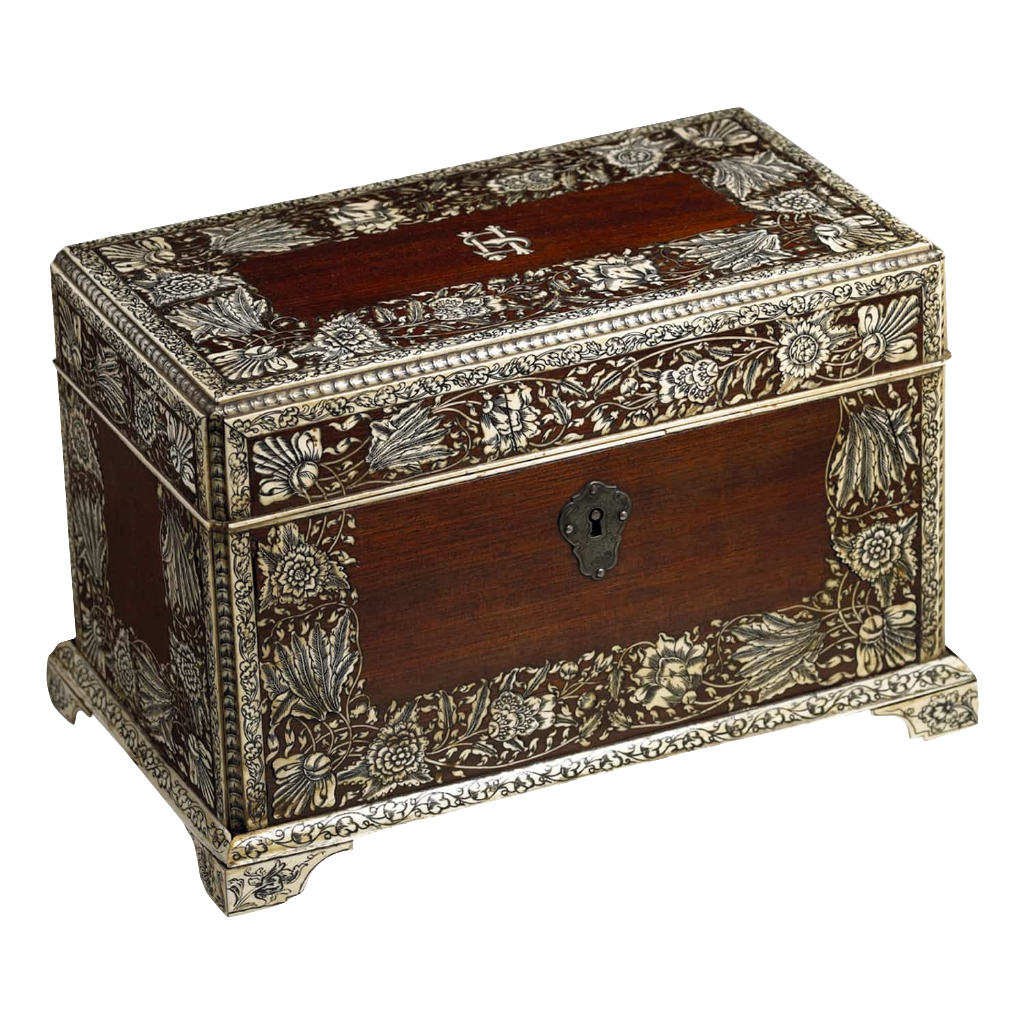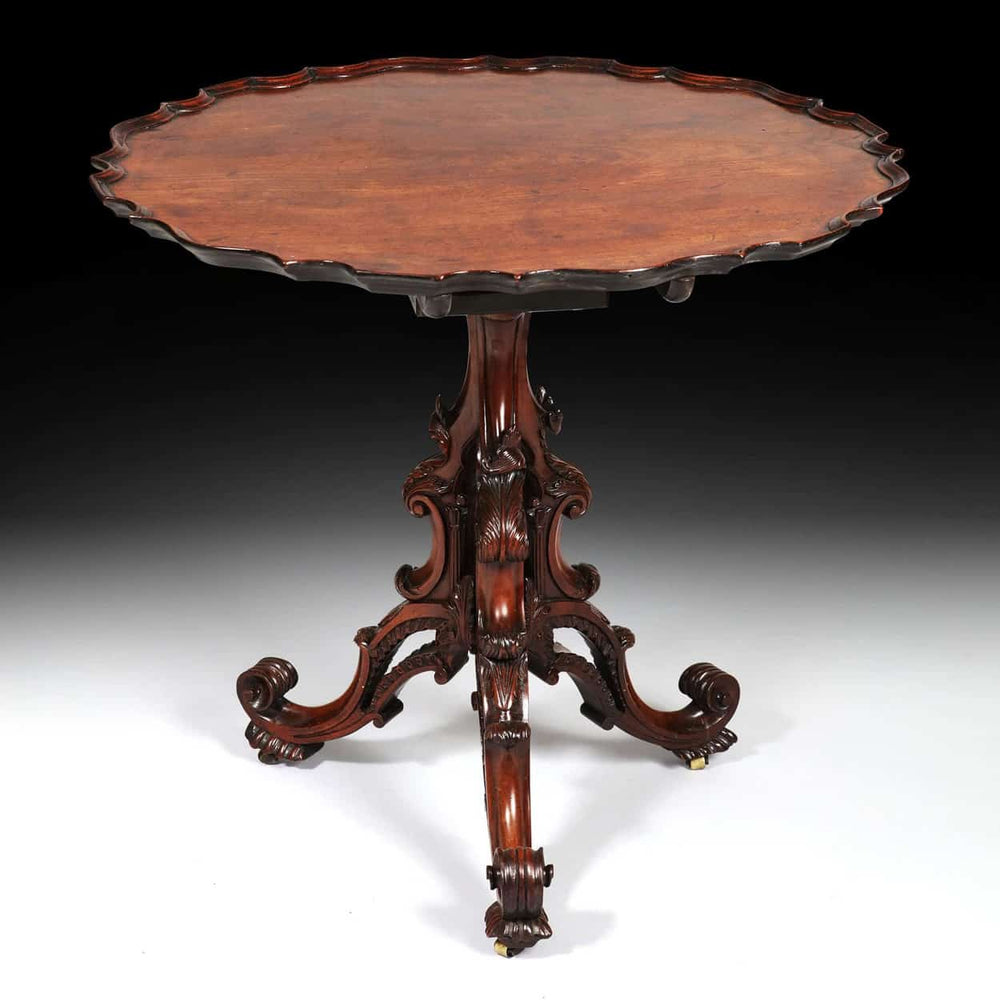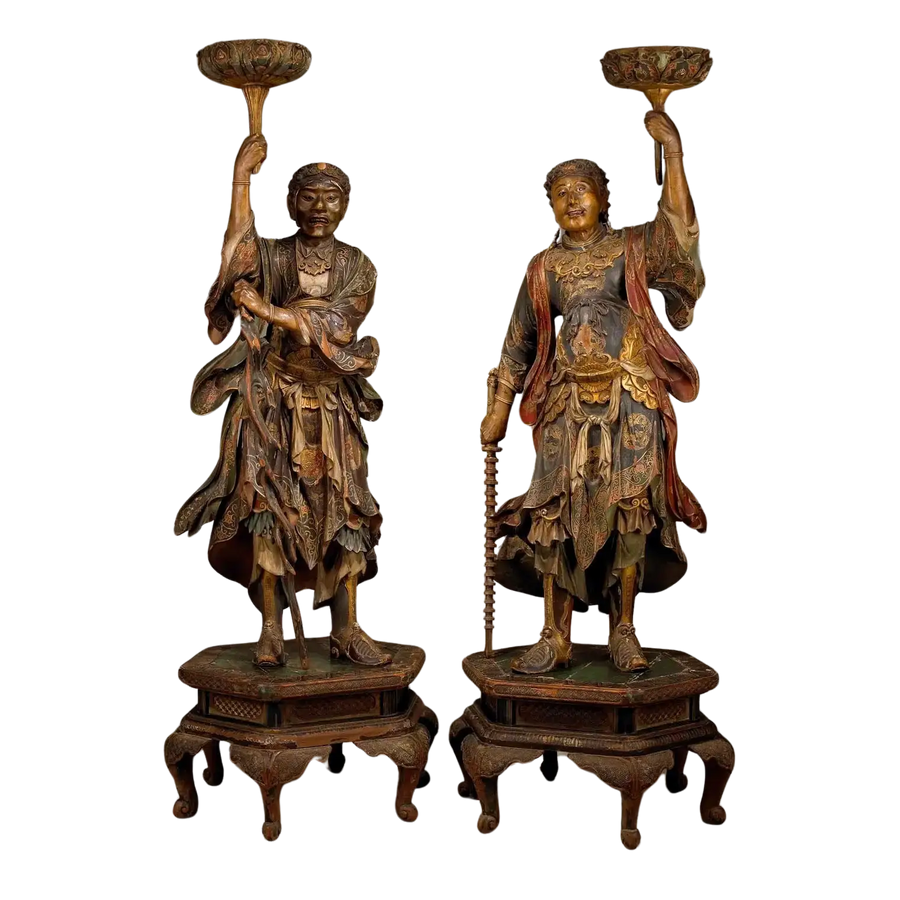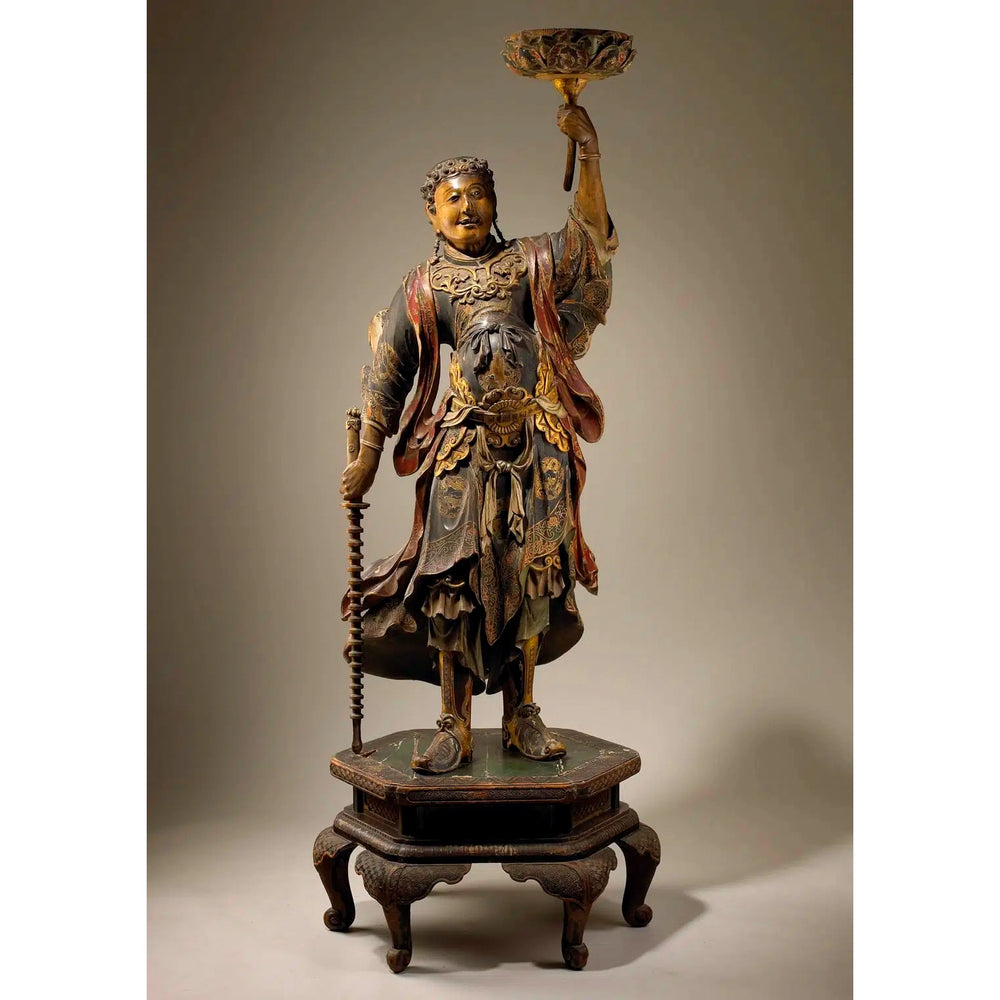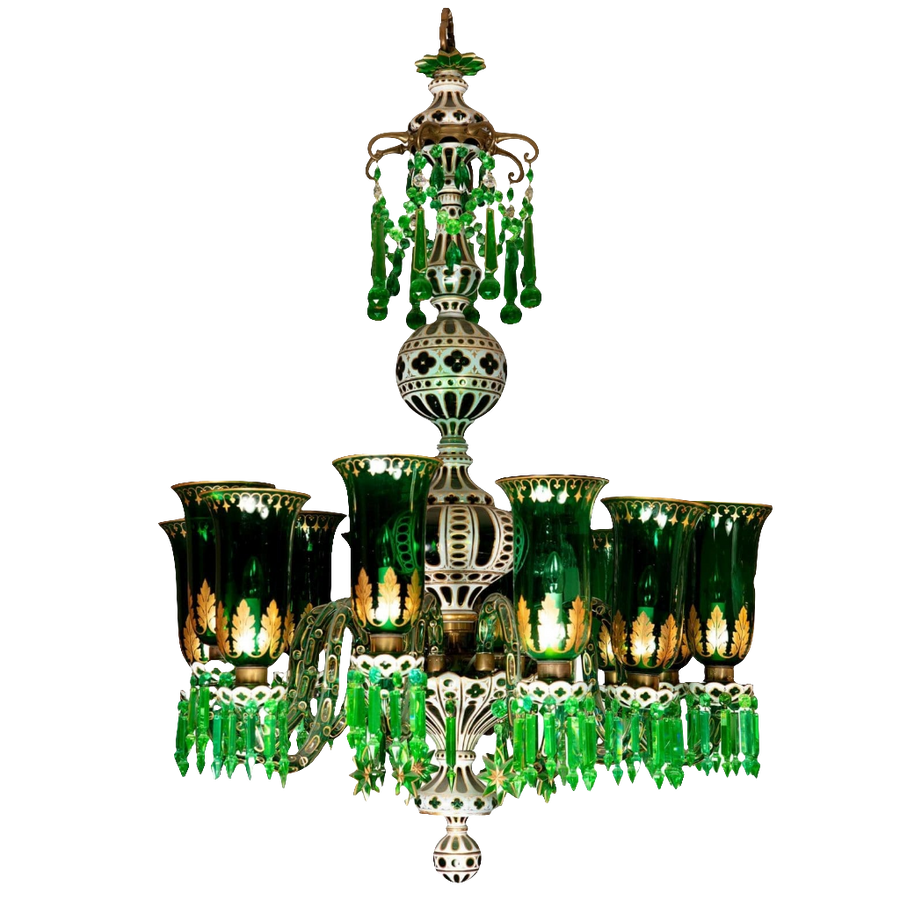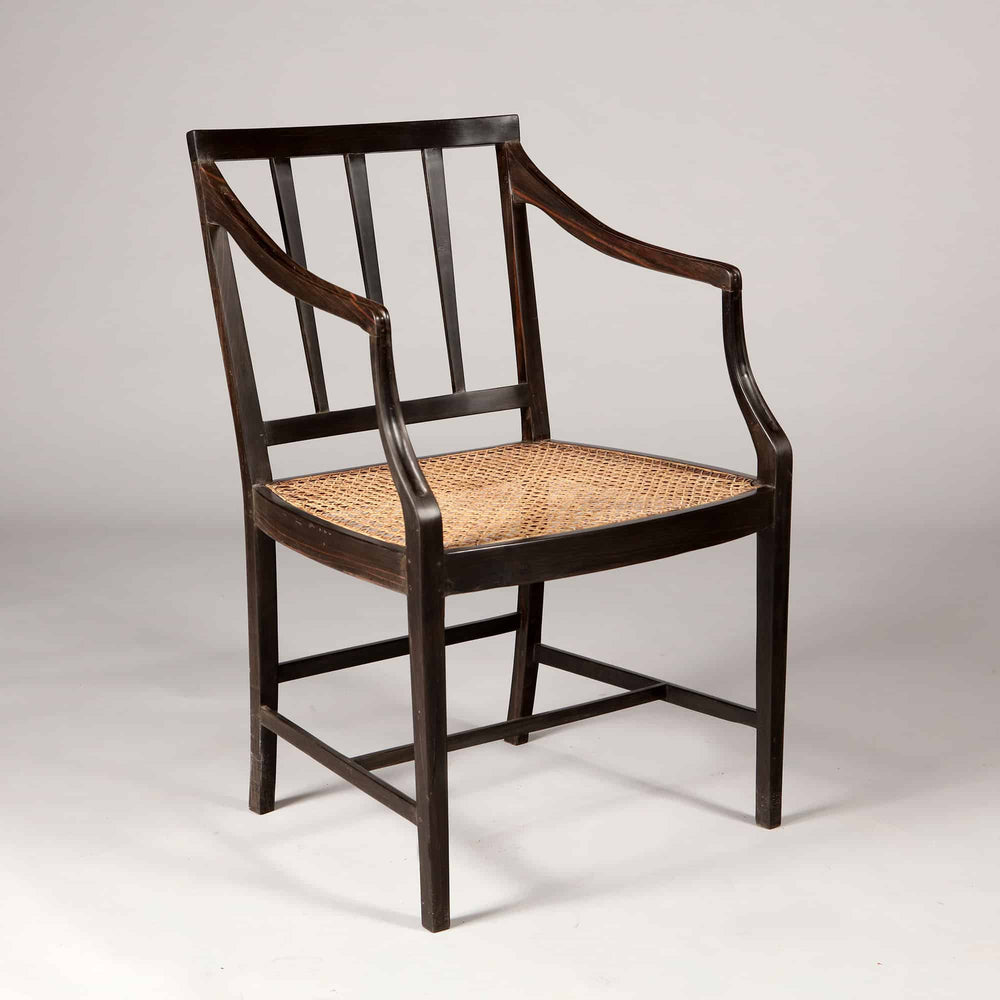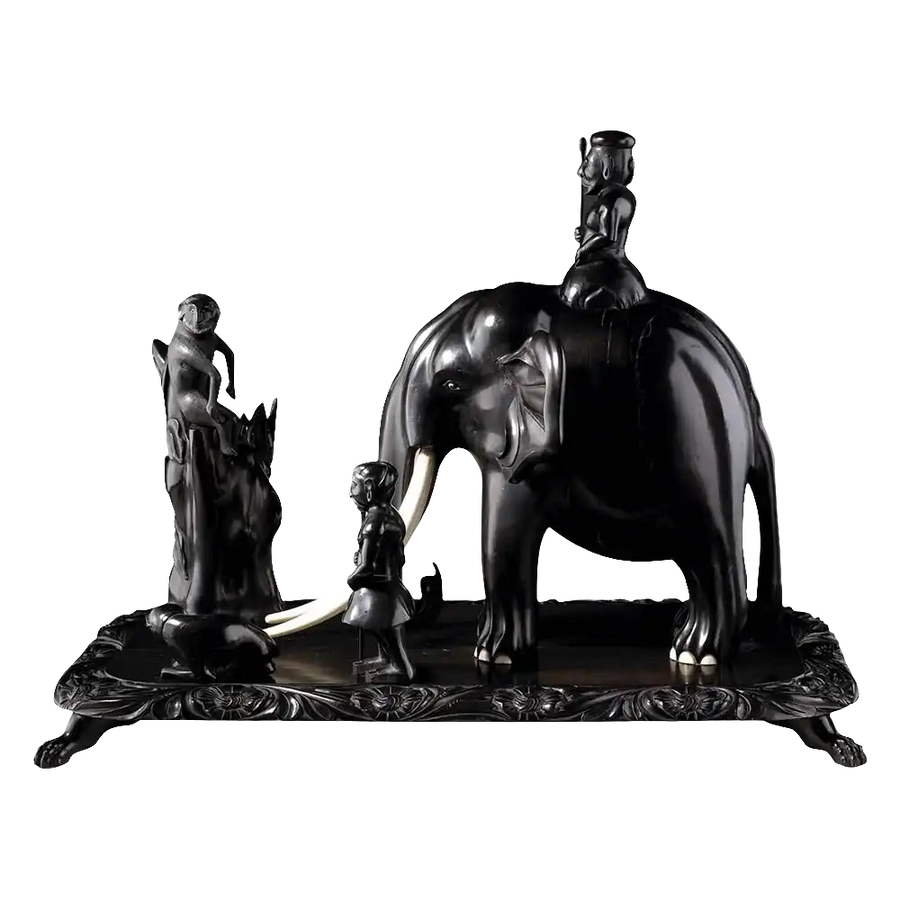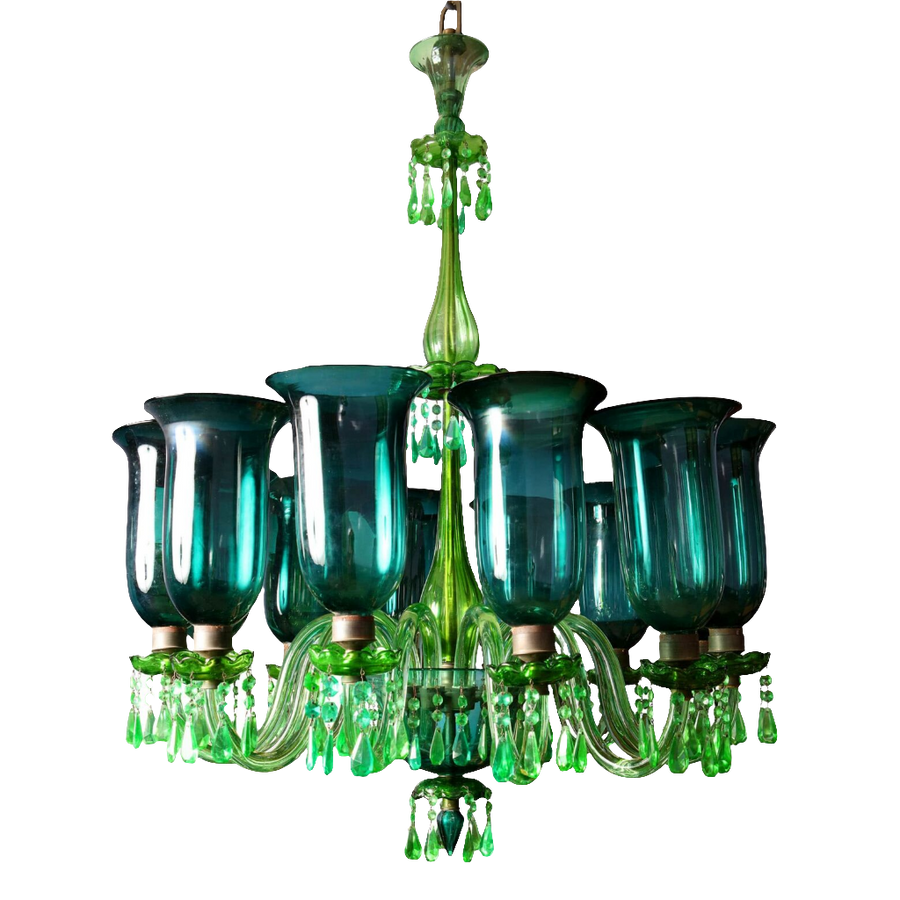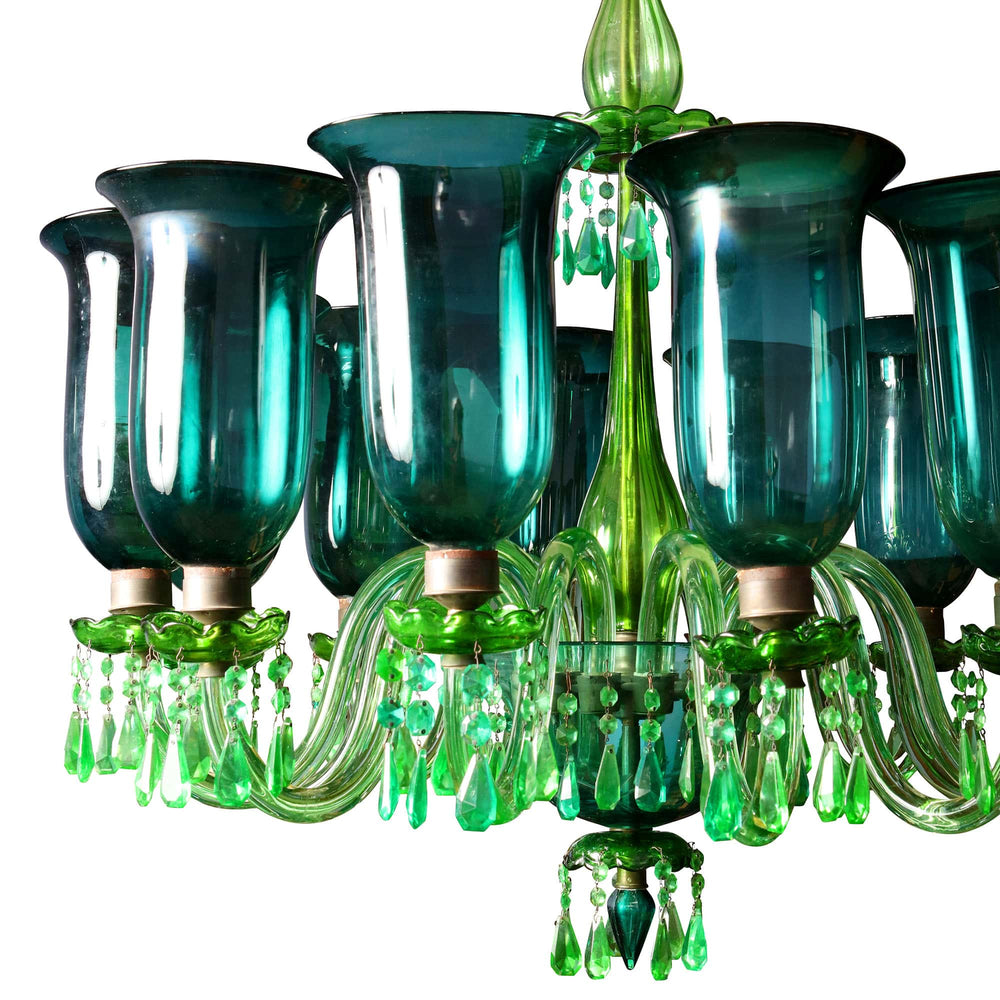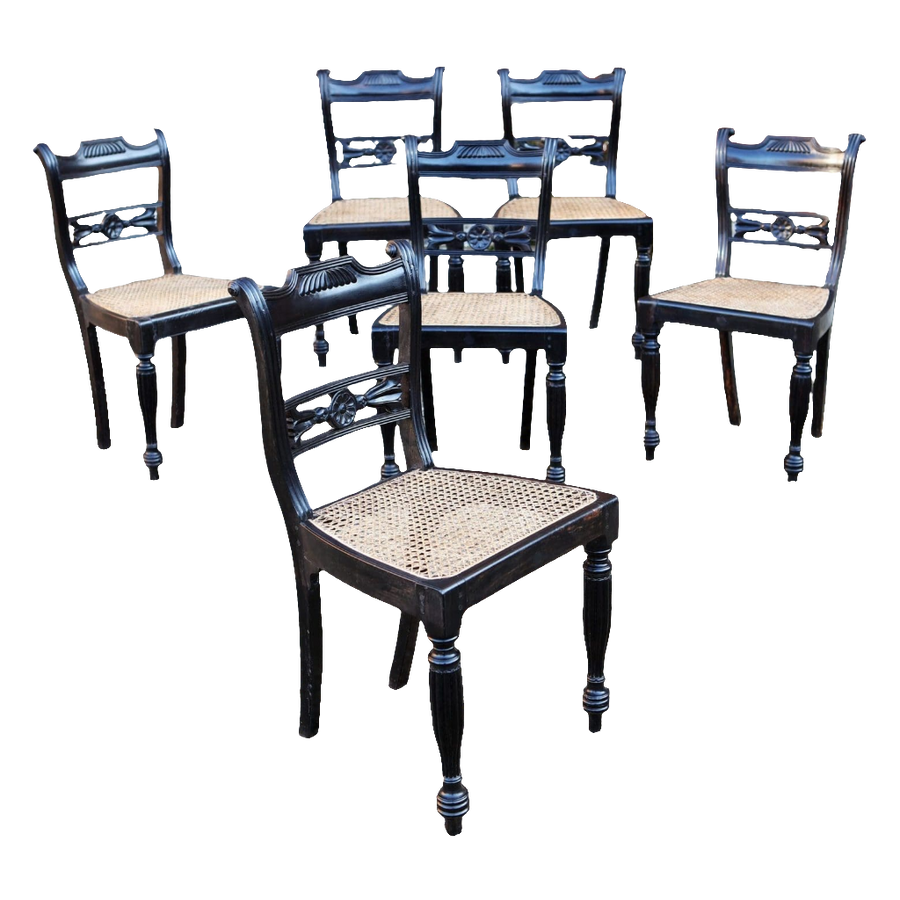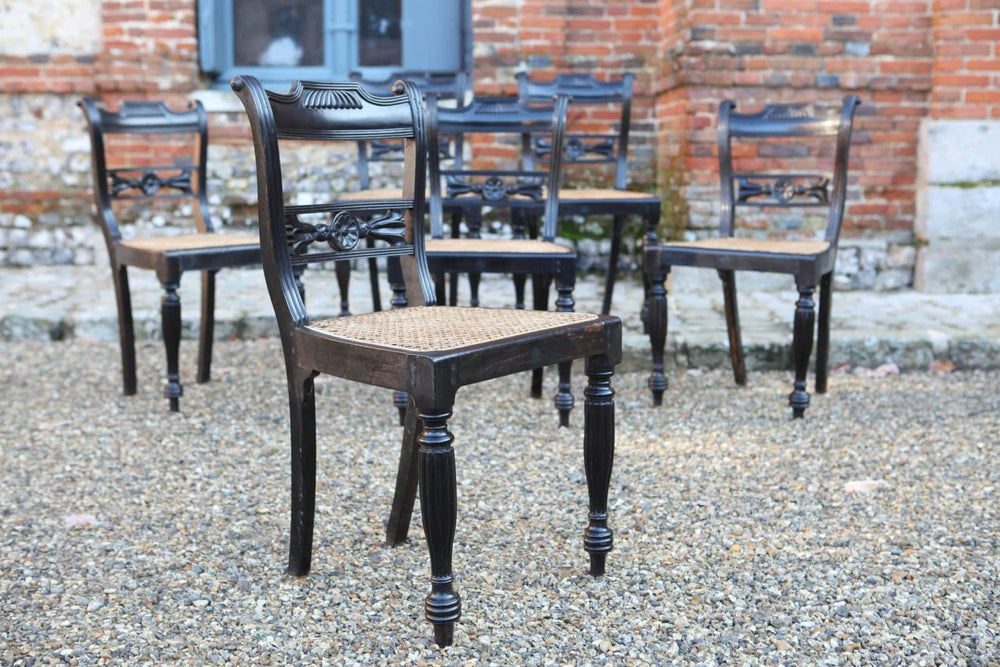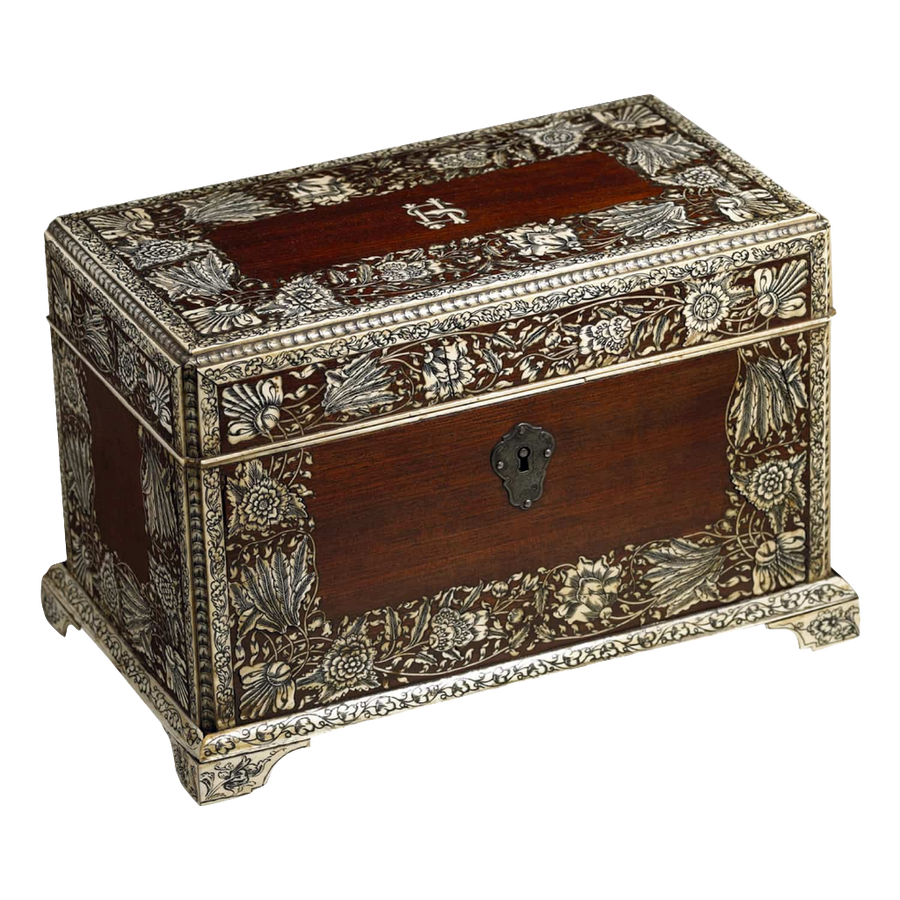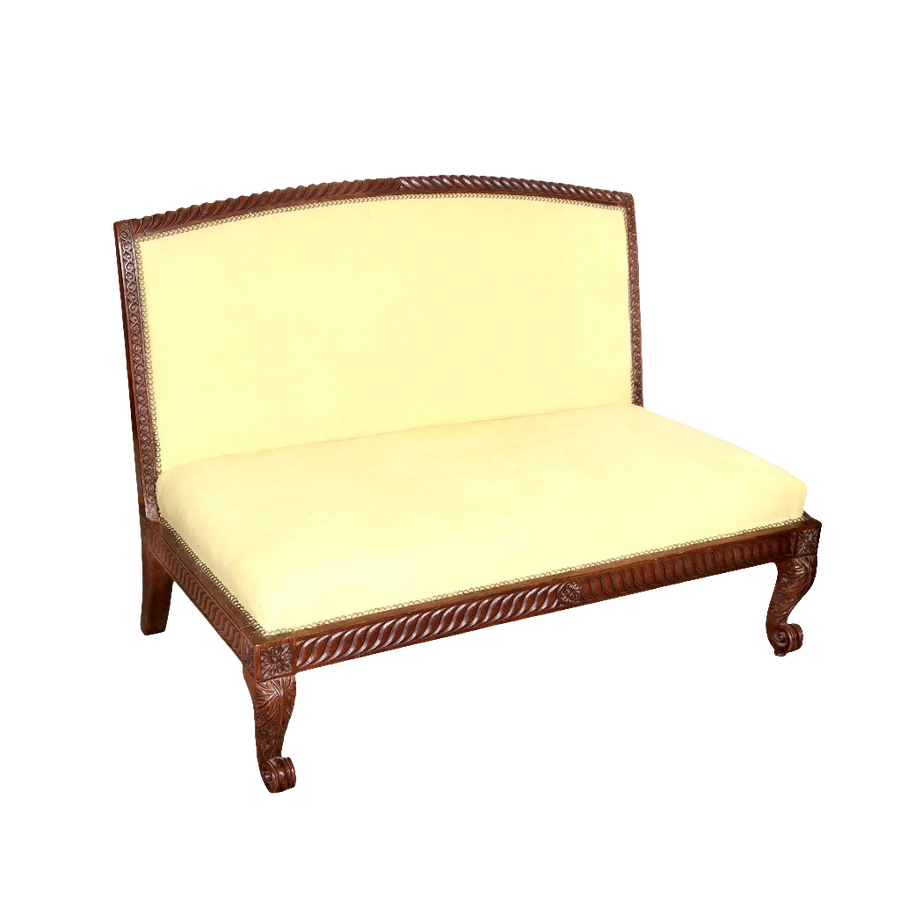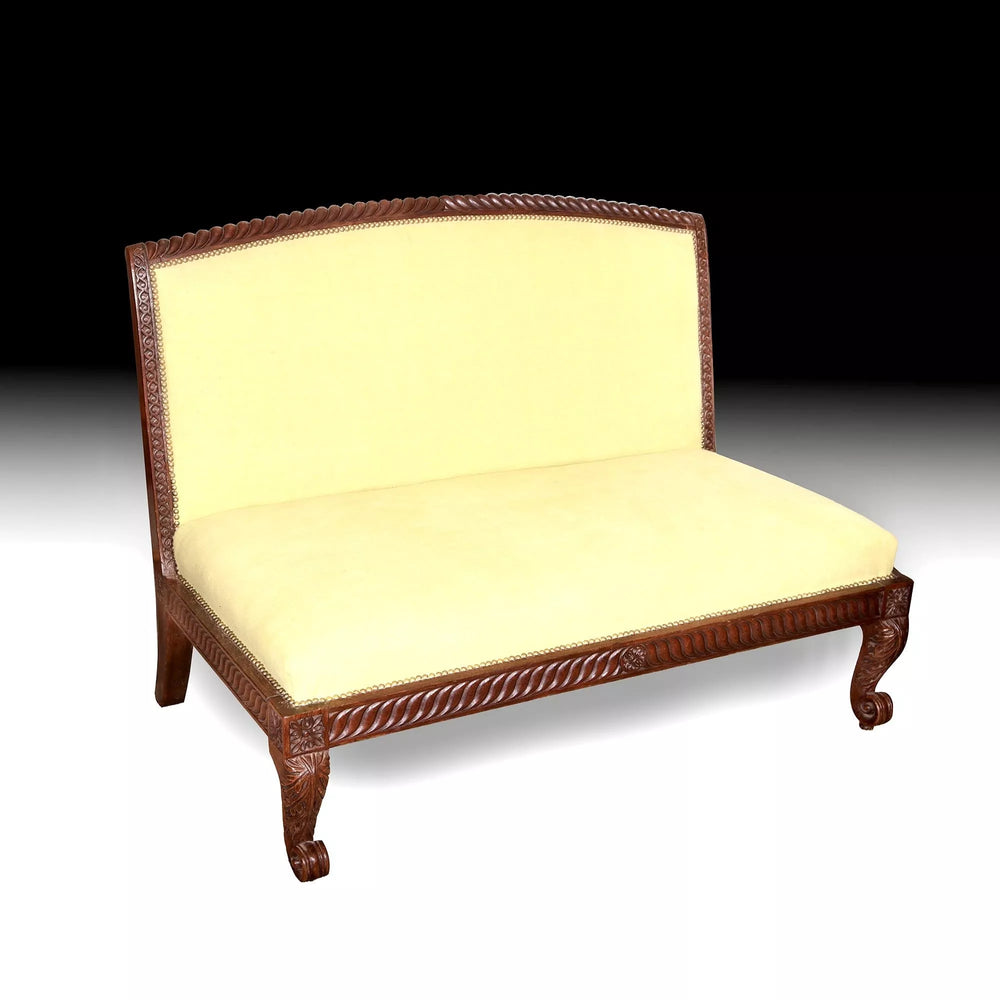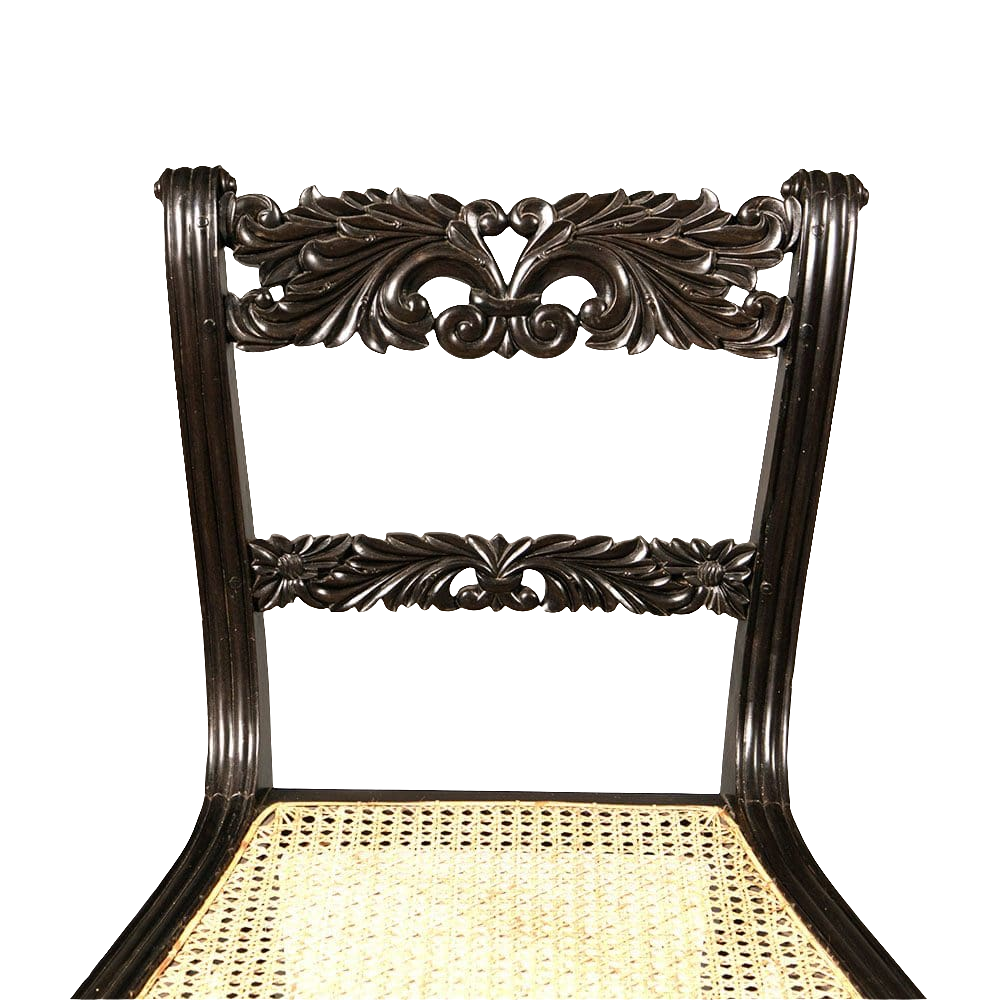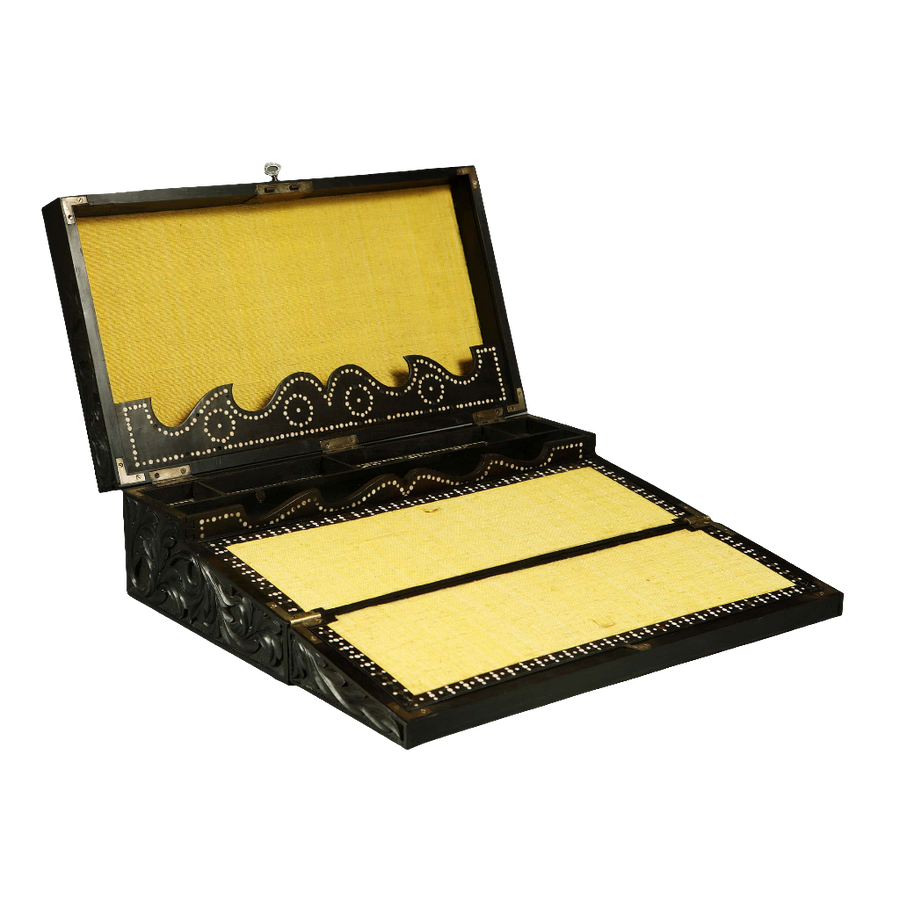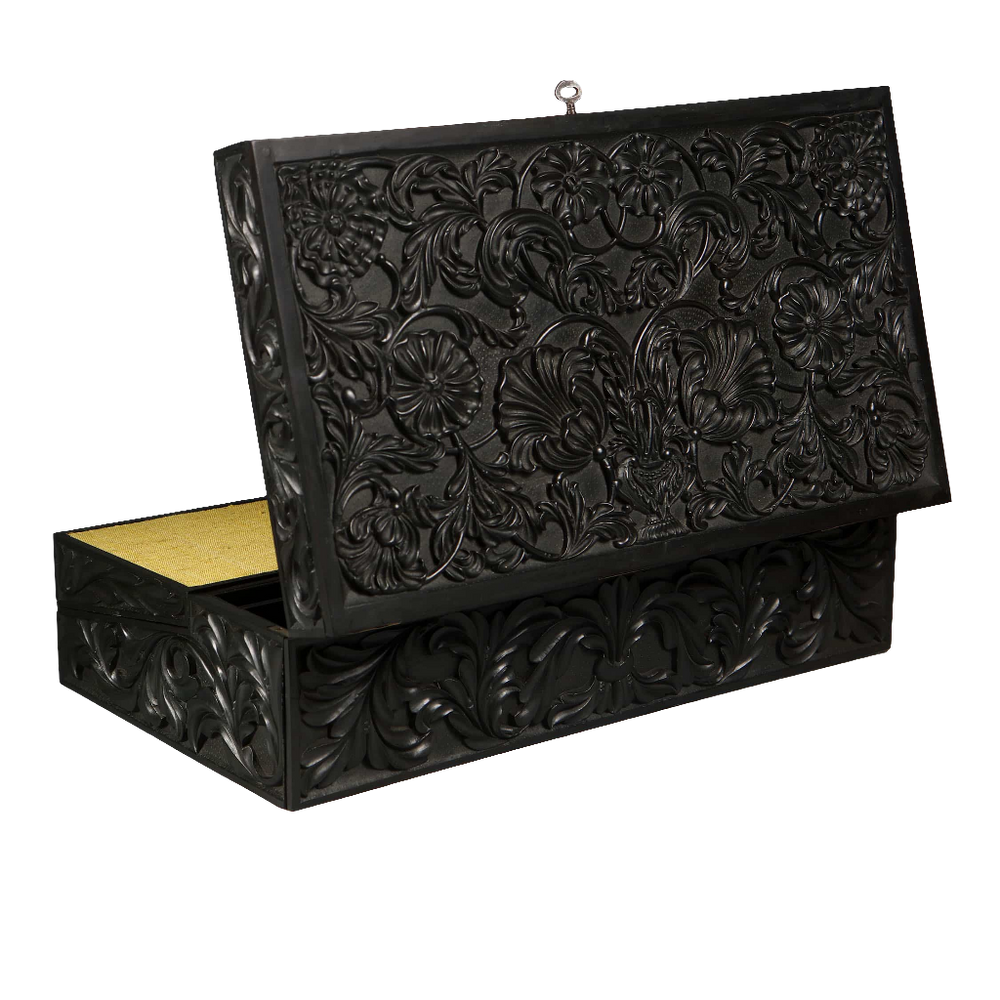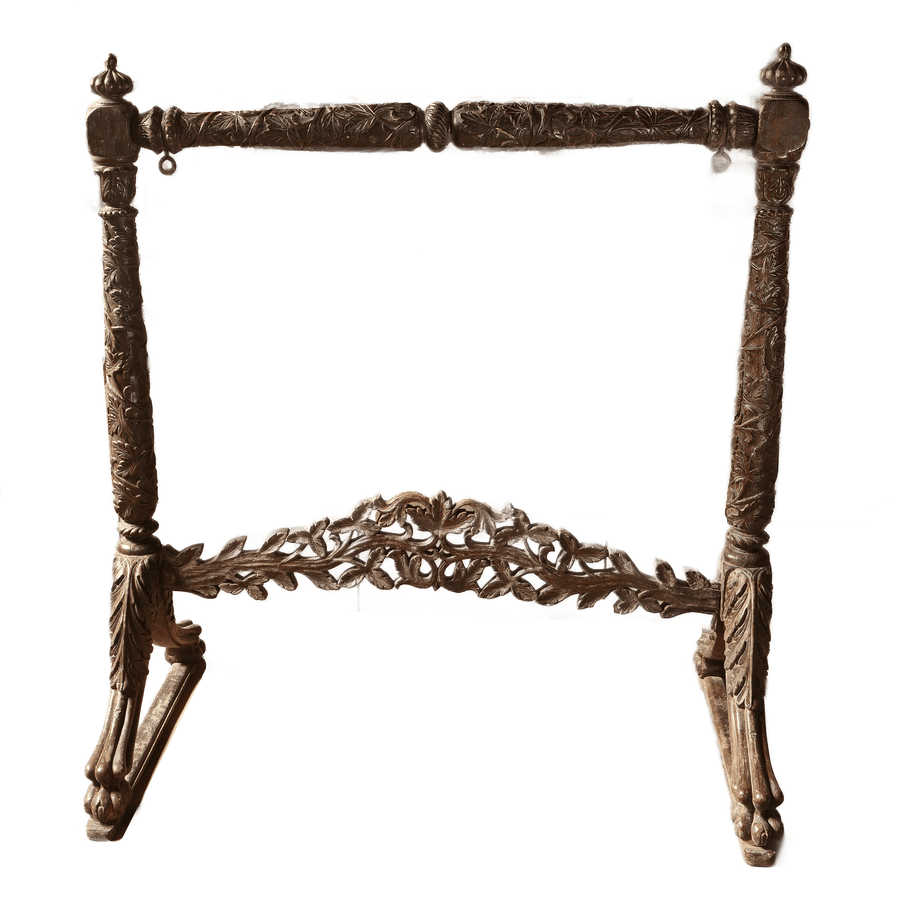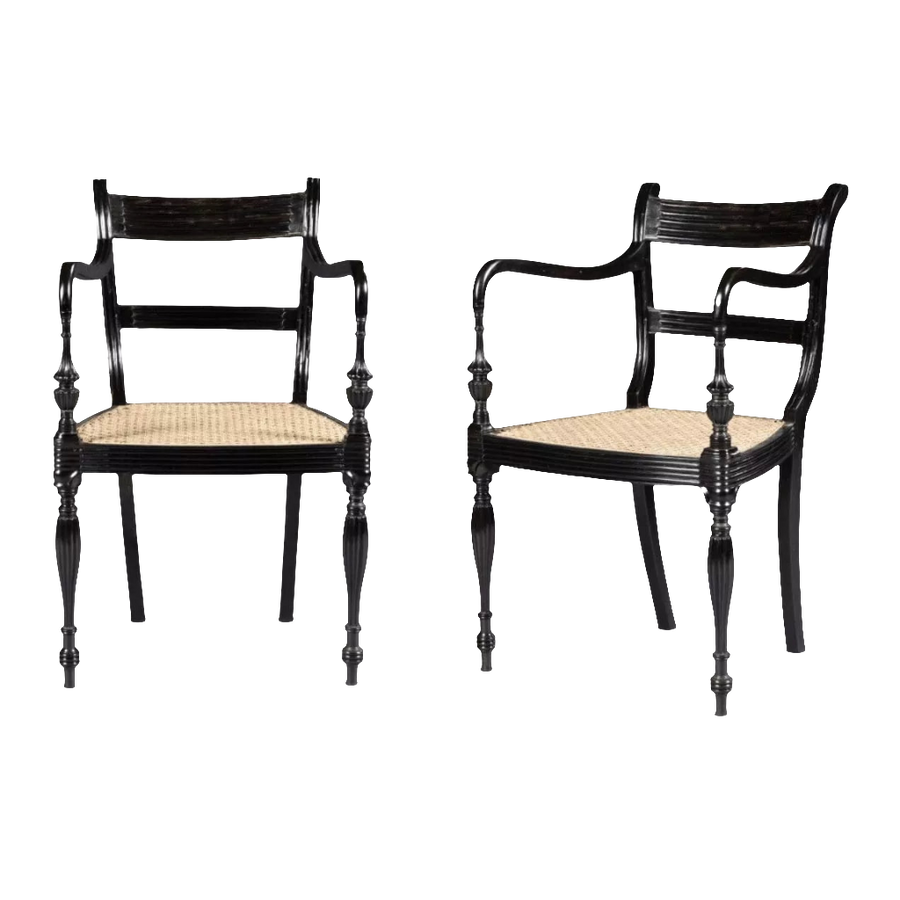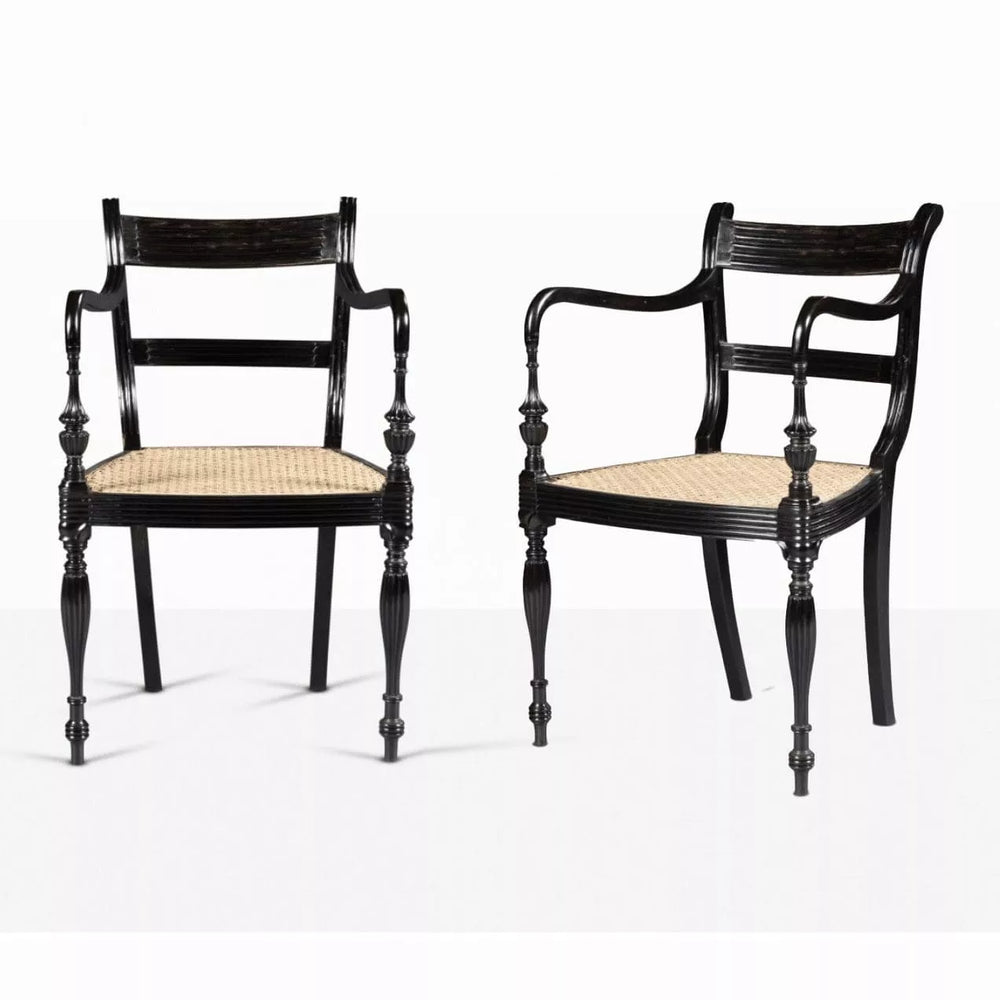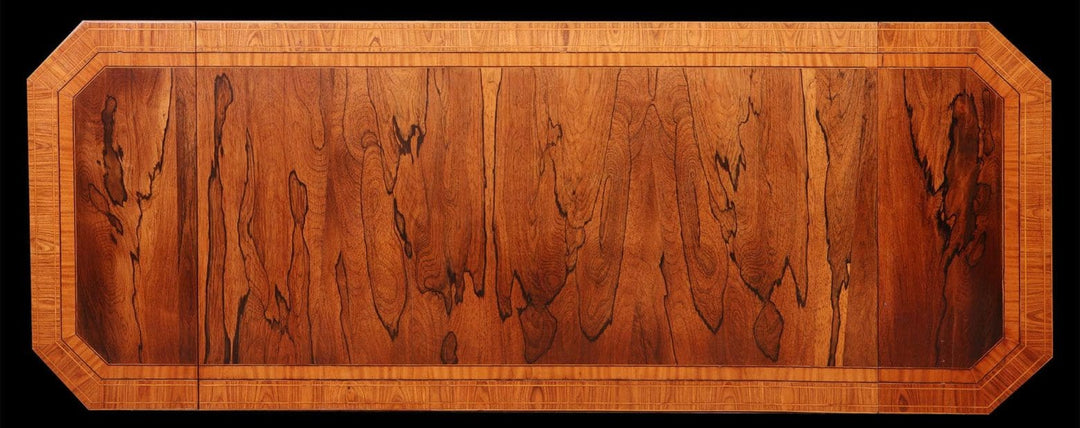Splendours of Empire:
In the 19th century, Anglo-Indian decorative and fine arts flourished as a striking fusion of Indian craftsmanship and British design sensibilities. Created by British colonialists living in India, these works embodied a rich cultural dialogue between East and West.
The artistry was characterised by intricate carvings, luminous inlays, and the use of vibrant colours, especially green and gold. Traditional Indian motifs—floral arabesques, mythological figures, and animal forms—were seamlessly combined with European neoclassical lines and proportions. The result was furniture and objets d’art that were not merely functional, but highly ornamental, reflecting both the precision of Indian artisanship and the refinement of British taste.
Key materials such as glass, ivory, ebony and satinwood were prized for their beauty and durability, often worked into dramatic contrasts or detailed marquetry. Today, Anglo-Indian art and furniture remain highly sought after, valued both for their historical significance and as enduring symbols of cross-cultural creativity.
Splendours of Empire:
In the 19th century, Anglo-Indian decorative and fine arts flourished as a striking fusion of Indian craftsmanship and British design sensibilities. Created by British colonialists living in India, these works embodied a rich cultural dialogue between East and West.
The artistry was characterised by intricate carvings, luminous inlays, and the use of vibrant colours, especially green and gold. Traditional Indian motifs—floral arabesques, mythological figures, and animal forms—were seamlessly combined with European neoclassical lines and proportions. The result was furniture and objets d’art that were not merely functional, but highly ornamental, reflecting both the precision of Indian artisanship and the refinement of British taste.
Key materials such as glass, ivory, ebony and satinwood were prized for their beauty and durability, often worked into dramatic contrasts or detailed marquetry. Today, Anglo-Indian art and furniture remain highly sought after, valued both for their historical significance and as enduring symbols of cross-cultural creativity.
Read More
